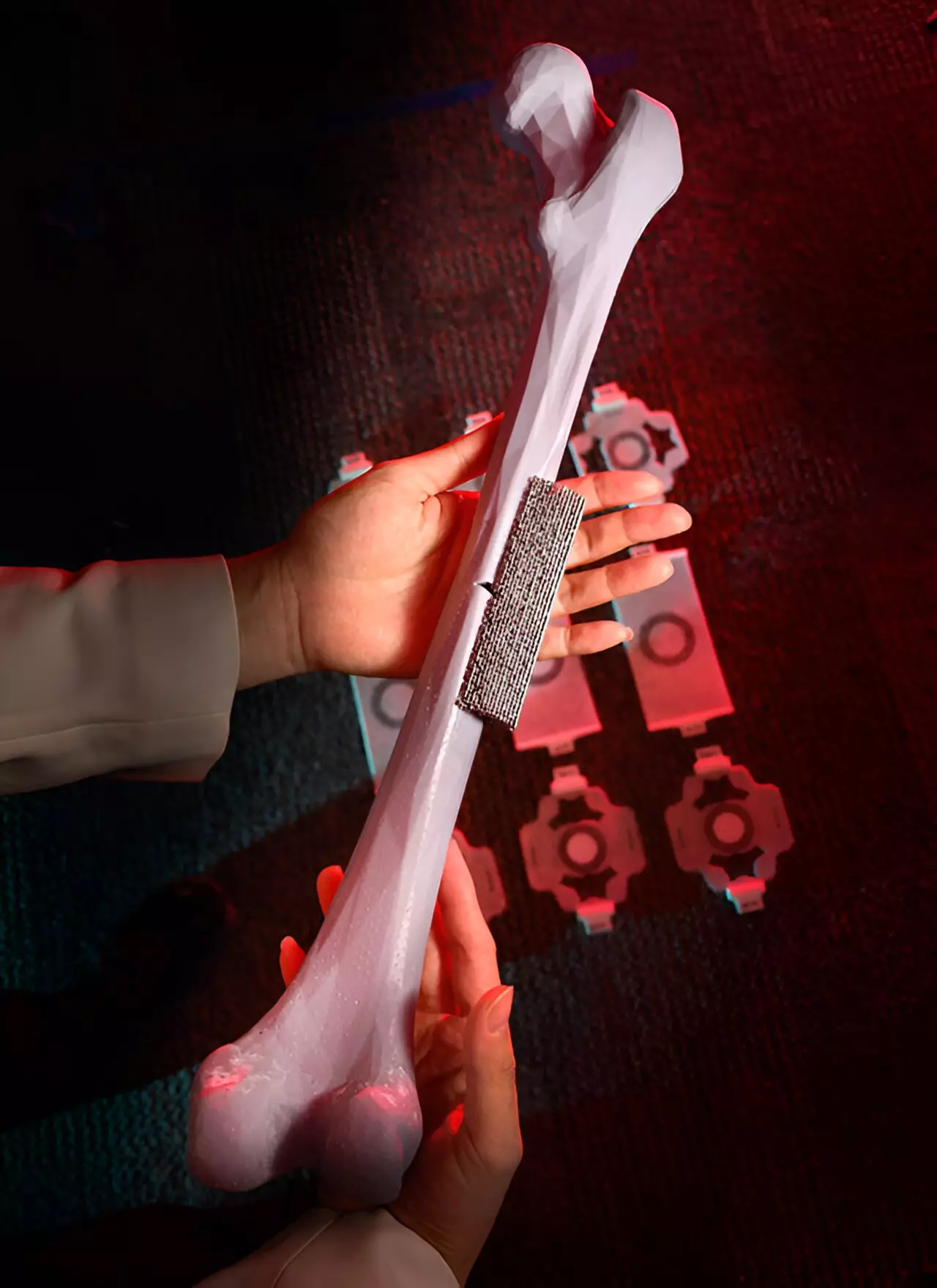The use of natural materials such as bone, bird feathers, and wood has long fascinated scientists due to their intelligent approach to physical stress distribution despite their irregular architectures. However, the correlation between stress modulation and the structures of these materials has remained a mystery. A recent study has shed light on this relationship by incorporating machine learning, optimization, 3D printing, and stress experiments to develop a material that mimics the functionalities of human bone for orthopedic femur restoration.
Fractures of the femur, the long bone in the upper leg, are a common injury in humans, particularly among the elderly. When the femur is fractured, stress tends to concentrate at the crack tip, increasing the risk of further lengthening of the fracture. Traditional methods of repairing a fractured femur involve surgical procedures to attach a metal plate around the fracture using screws. However, this approach may lead to issues such as loosening, chronic pain, and additional injuries.
A New Approach to Orthopedic Repair
Led by University of Illinois Urbana-Champaign professor Shelly Zhang and graduate student Yingqi Jia, in collaboration with professor Ke Liu from Peking University, the study introduces a novel method for orthopedic repair. By utilizing a fully controllable computational framework, the researchers were able to develop a material that replicates the structure and stress distribution of human bone. This groundbreaking approach has been documented in the journal Nature Communications.
The team began with a materials database and employed a virtual growth stimulator and machine learning algorithms to create a virtual material. By understanding the relationship between the material’s structure and physical properties, the researchers were able to develop a computational optimization algorithm that maximizes both the architecture and stress distribution that can be controlled.
Real-World Application
In the laboratory, the team used 3D printing to produce a full-scale resin prototype of the bio-inspired material. This prototype was then attached to a synthetic model of a fractured human femur for testing. The tangible model allowed the researchers to conduct real-world measurements, evaluate its effectiveness, and validate the possibility of growing a synthetic material in a manner similar to biological systems.
The researchers envision that this innovative approach could revolutionize the field of orthopedic repair by providing optimized support and protection against external forces to stimulate bone repair. Additionally, this technique has the potential for broader applications in various biological implants where stress manipulation is crucial. As a versatile and general method, it could be adapted to different types of materials, including metals, polymers, and virtually any other material where stress distribution is a key factor.
The integration of biomimicry, machine learning, and computational optimization represents a remarkable advancement in the realm of orthopedic repair. By gaining insights from natural materials and replicating their intelligent structures, researchers have opened the door to a new era in orthopedic treatments that prioritize both efficacy and patient comfort.



Leave a Reply